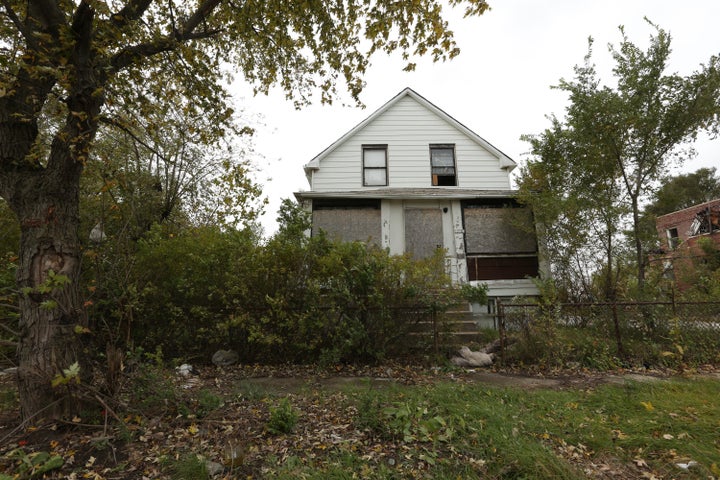Like many residents of South Bend, Indiana, Laura Jensen has known Pete Buttigieg for years. In 2012, just after he was first elected mayor, Buttigieg started visiting the preschool where she worked. He would walk the halls and read books aloud to her students.
It was a nice gesture, but what really impressed her were the quieter, more technical fixes Buttigieg made behind the scenes. In 2018, Buttigieg allocated $100,000 of South Bend’s budget to early childhood education and asked Jensen, by then the CEO of the local United Way chapter, how he should spend it. She told him that the county had recently been awarded some federal grants and needed to expand its capacity to take advantage of them. It may not have been the sexiest policy in the world, but Buttigieg agreed to spend the city’s funds on hiring teachers and expanding classrooms.
“I can’t tell you how much it meant to have someone listen when we said we had to build our capacity,” Jensen said. “It was never about ego. It was always, ‘I want to know your thoughts.’ That was huge.”
Buttigieg, who officially announced his presidential candidacy on Sunday, spent his tenure as South Bend mayor applying his skills as a management consultant to nearly every problem the city faced. From sewer overflows to gun violence to garbage pickup, Buttigieg collected data, sought out technical fixes and set quantifiable goals.
By the numbers, he has done a remarkable job. Since 2012, South Bend’s population has ticked upward for the first time since 2000. Unemployment has plummeted from 11.8% to 4.1%. Good-governance initiatives have yielded extra funding for parks and millions of dollars in federal grants. Following a “Smart Streets” redesign that slowed traffic and expanded sidewalks, downtown South Bend has attracted more than $90 million in private investment.
But Buttigieg’s singular focus on gathering data and improving statistics has also led him astray at times. While South Bend’s economic fortunes have improved overall, homelessness and displacement have worsened. Buttigieg has sold a park to private developers and given tax breaks to luxury condos. Less than a mile west of South Bend’s booming downtown, its African American and Latino residents continue to complain of police harassment, rampant evictions and a team of “code enforcement” inspectors who fine them every time they forget to mow their own lawns.
Buttigieg has become the most prominent example of a management style that has taken over American cities. From Baltimore to Kansas City to Los Angeles, urban policymakers have become increasingly enamored with “data-driven” policies and increasingly reliant on quantitative approaches to social problems.
But these methods are not as impartial as their proponents suggest. Throughout his tenure as mayor, Buttigieg’s fixation on measurable goals at times led him to overlook weaknesses in his policies and concerns among his constituents. His initiatives may have achieved their targets, but they also ended up harming his city’s most vulnerable residents.
“He’s obviously a person of privilege and highly educated and from a well-off background,” said John Shafer, the director of Michiana Five for the Homeless, a South Bend-based charity. “It’s hard for someone in that position to relate to people in poverty. That may be his biggest weakness.”

A “Data-Driven” Approach Is Only As Good As The Data You Collect
The best example of Buttigieg’s quantitative approach to city management ― and its shortfalls ― is the 1,000 Houses in 1,000 Days project.
In 2012, just after he was elected to his first term, Buttigieg set out to address the 14% of South Bend’s housing stock that was sitting vacant or abandoned. He approached the problem using his standard management-consultant methodology: Gather data, convene experts, set goals.
Over the next six months, a task force of academics and policymakers mapped the location and condition of every derelict property in South Bend. At the end of the process, they told “Mayor Pete” that he should levy fines on homeowners who could afford to make repairs and demolish properties sitting on land that could be put to better use.
Almost immediately, Buttigieg announced his ambitious goal and set about achieving it. He expanded the city’s team of housing inspectors, increased the penalties for code violations and shortened the deadline for property owners to make repairs. For houses that were too damaged to rehabilitate, Buttigieg gave city employees the authority to tear them down, then charge the owner for the service.
According to the numbers, the strategy worked. The code enforcement department increased civil penalties by 25% the first year the plan was implemented. In 2014, inspectors handed out more than $500,000 in fines. By the time the initiative concluded, more than 1,200 homes had been fixed up or torn down.
But Buttigieg left something out. As first reported by BuzzFeed, the vast majority of the derelict properties were located in South Bend’s low-income, black and Latino neighborhoods. Some had inherited old homes from relatives. Others had bought properties at foreclosure auctions, expecting that a $500 house could never be a bad investment. Still others were trapped in “zombie mortgages,” forced to move out when they couldn’t pay off their home loan but still listed as the legal owner of the property.
Despite all the information indicating that South Bend’s blighted homes were overwhelmingly owned by minorities, however, the city’s Vacant & Abandoned Properties Task Force Report did not include any mention of race whatsoever. According to the annual reports of the Code Enforcement department, fines and demolitions were heavily concentrated in minority neighborhoods. To this day, South Bend has never performed an analysis of the 1,000 Houses in 1,000 Days initiative that gathered any information on the ethnicity or income of the homeowners affected.
“I kept paying the fines because I thought, I’m a young business owner and this is just how it works,” said Tyria Bailey, a South Bend restaurant owner.
From 2012 to 2014, Bailey paid thousands of dollars in fines, usually for things like not mowing her grass or leaving trash outside. She once received a $900 citation for wood sitting in the yard of a neighbor’s home. And even on days when she didn’t get fines, she had to be vigilant. The local code enforcement inspector used to visit her business so often that her customers knew him by name.
“Even now I’m always checking the mail,” she said. “Because if you’re not right even just for a day, you know the fine is coming.”
Though Buttigieg did not respond to requests to be interviewed for this article, the co-chair of the task force, Jim Kelly, disputes the account that the 1,000 Houses in 1,000 Days initiative targeted minority homeowners. South Bend’s policy complied with the law, he said, and enforcement inspectors confirmed that each home was abandoned before deciding whether to compel owners to make repairs or demolish it. Because none of the homes were occupied, the initiative did not result in the displacement of any South Bend residents.
“The communities in question are not worse off for having vacant lots replace unsafe, vacant houses,” Kelly said. “Adjoining homeowners were certainly not negatively affected by having the houses come down. Anyone who has had to live 15 feet away from a vacant/abandoned house will tell you so.”

The Limits Of Good Intentions
Even his local critics acknowledge that Buttigieg never set out to design policies that impose disproportionate harm on South Bend’s poor and minority populations. The problem is not a lack of personal compassion. It is that he applied the same management thinking, and the same trust in existing systems, to nearly every problem he addressed.
“It’s not that there was an intentional plot by this administration,” said Regina Williams-Preston, a South Bend Common Council member now running to replace Buttigieg as mayor. “They simply used the same tools for economic development they’ve been using for 50 years. But guess what? Those tools were developed intentionally to discriminate and marginalize and keep certain people out.”
The same distance between intention and action can be found elsewhere in Buttigieg’s record as mayor. Despite dozens of statements promoting diversity and inclusion, South Bend spends less than 1% of its procurement budget on minority-owned businesses. A think tank hired to produce a report on the city’s racial wealth gap was specifically prohibited from issuing recommendations for addressing it. Buttigieg demoted the city’s first African American police chief amid allegations that his own officers made racist statements about him on tape. (After this story was published, Chris Meagher, Buttigieg’s national press secretary, sent HuffPost a statement saying the police chief was demoted because he was the target of a federal investigation.)
Buttigieg’s blind spot is also evident in his approach to homelessness. South Bend has just one shelter, with around 200 beds, for its homeless population of nearly 400. Though he convened a working group in 2017, Buttigieg’s primary solution to the problem has been arresting people sleeping under bridges and adding “Do not give to panhandlers″ signs on downtown street corners.
“He boasts about how much he’s done on homelessness, but then he brings out the bulldozers,” Shafer said.
In 2016, with references to the data-driven “housing first” approach, Buttigieg’s administration used a state grant to build 32 units of housing for drug dependent or mentally ill homeless people. Despite warnings from local advocates, however, the facility never hired enough security staff or social workers to get its residents stabilized. The result has been a housing complex that replicated many of the most dangerous aspects of living on the streets.
“The first overdose death happened within two months,” Shafer said. “You can’t just put homeless people into housing and forget about them.”
While Buttigieg’s technocratic stance appears to have softened slightly in recent years — he eventually set up a fund to help low-income residents repair their homes — he has never applied his quantitative approach to the effects of his own policies. While his memoir, ”Shortest Way Home,” devotes an entire chapter to the success of the 1,000 Houses in 1,000 Days project, the only policy it describes as a mistake is reinstating the African American police chief. It makes no substantive mention of homelessness at all.
“I understand why you want to get the best and brightest to work on these issues,” said Jorden Giger, a local community activist, “but you also have to be willing to speak to the people who live here.”
Clarifications: A reference to the ownership of derelict properties has been edited for consistency to reflect that, as reported elsewhere in this article, the demographic ownership of those properties was not tracked by the city. A reference to the sale of public land to private developers has also been edited to indicate that this was one golf course.

